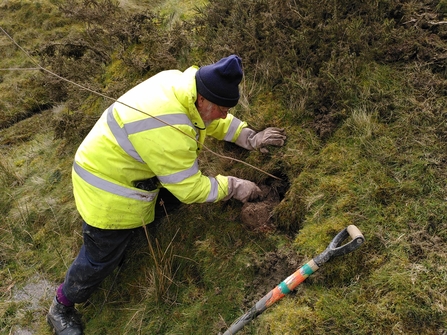I first heard about no-fence tree planting after a conversation with Jonathan Hulson, Land Management Advisory Service Development Officer for North Wales Wildlife Trust. Jonny visited our Pentwyn Farm site, and recommended use of cover and sabre tree planting techniques.
One of the ways in which young trees naturally escape browsing pressure is by growing out and over sloping ground on hillsides, rocky outcrops, streams and riverbanks. Sabre planting mimics this by planting trees perpendicular/ at 90 degrees to a steep slope, helping to keep the vulnerable leading shoots as far out of reach from livestock as possible. However, if the leading shoot is browsed, then a less accessible shoot will take over as the lead. As the tree grows upwards, it will start to take on a more vertical direction, creating a curve in the stem. The curve is what gives the name ‘sabre’.



